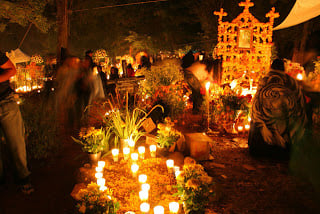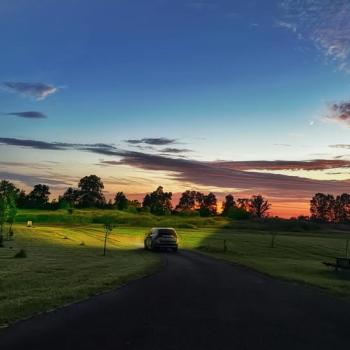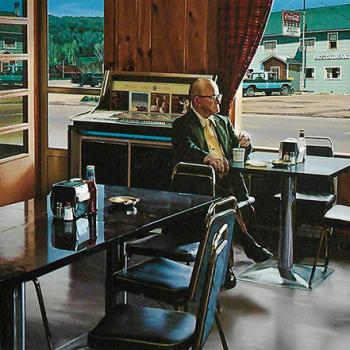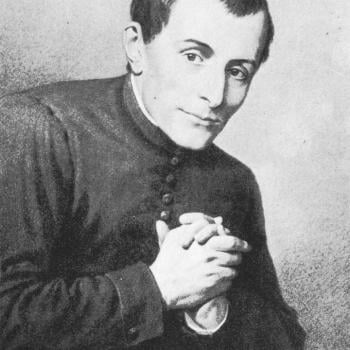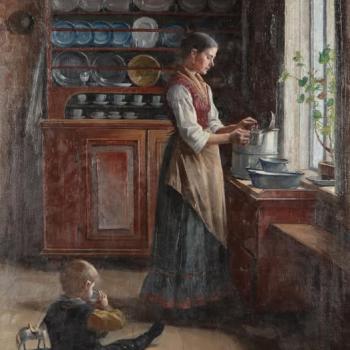The Latino/Latina population is quickly becoming a dominant aspect of North American Catholicism, and christian spirituality in general. Because of this shift, it has become increasingly important to understand the spirituality of Latino people. Like it or not Latino spirituality will become a part of local parish life more and more in the years to come. This reality has had mixed responses.
There are already many people who have made comprehensive condemnations of Latino/Latina spirituality when they encounter the differences between Latino worship and Western forms of worship which have, up till now, been the dominant culture of worship in the United States. These sorts of critiques are not useful. They limit the scope of understanding Latino spirituality to a few idiosyncratic elements and compress the immense diversity of the Latino community to a single caricature.
Although the Latino culture is a distinct culture, it also includes many cultures within it. Taking steps to understand how Latino populations worship God will always involve multiple levels of understanding. One area of difference one can see is between national Latino cultures. A Mexican is different than a Chilean in the same way that a German is different than a Swede.
There is also a diversity of racial backgrounds at play in every Latino context. One cannot begin to understand Latino spirituality without realizing that it comes from a synthesis of diverse sources that have been in the process of inculturation for hundreds of years. Latin peoples are made up of the descendants of original native populations, as well as the descendants of the Europeans that conquered Central and South America, there is also a significant ancestral connection to the African populations that were brought over as part of the slave economy that dominated many parts of the region for generations. These cultures each brought with them unique symbols and practices that informed how people encountered God. Because of this there is always an interplay at work between these various backgrounds and the rich language of symbol and practice at work in Latino worship.
Not only is there a national, and racial diversity at work in Latino spirituality there is also liturgical diversity. The history of the liturgy in Spain is somewhat unique. The Spanish people developed their own liturgical tradition over hundreds of years that we know today as the Mozarabic, Visigothic, or Hispanic Rite. This rite was in many ways suppressed by the Roman rite, but it was still an influence on the spirituality of many of the Spanish who came and conquered much of Latin America. Even western spirituality brought with it a diversity of symbols and practices.
This plethora of diversity has assured that there has been a great mosaic of creative interaction in the ways that Latino/Latina people communicate and express their faith. The end result has been a strong tradition of hispanic popular religious rituals apart from the liturgy in which cultural values like procession, drama, and dance are able to be incorporated using multiple symbolic frameworks.
Now that hispanic communities are becoming a more dominant part of North American spirituality these popular traditions are finding new meaning and context as they interact are played out as the traditions of a minority population in an environment that is sometimes hostile to Latio peoples and Latino traditions. Many of these traditions offer invaluable resources both for hispanic communities and also the broader communities that they are a part of.
One of the major celebrations for Latino populations is the celebration of Our Lady of Guadalupe. In this celebration people gather to watch a dramatic representation of the appearance of Mary to a poor Mexican named Juan Diego. This celebration has been critiqued by some as distracting from the Mass and many have argued that it should not be celebrated. However there is a great deal of good that can come out of it. Mary’s appearance to Juan is a powerful symbol of God identifying Latio people as God’s own and functions as a unifying point for hispanic communities, it offers a call to action to all people to respond to the gifts of God and join in God’s liberating mission to the world. In this celebration Latino cultural heritage is strengthened and the radical mission of Christ in the Church is proclaimed.
Another practice important to Latio spirituality is Good Friday reenactments. As a people that have been abused and trodden under foot through much of their history, Hispanic Americans often have a deep respect for the suffering and death of Jesus. In Jesus’ death he joined with the suffering and the oppressed and in his resurrection he offered a hope of liberation and healing for all those who know deep pain. Some have criticized the processions that happen as detracting from Easter and focusing too much on the death of Jesus. There is something else going on here. Latio spirituality unifies the paschal mystery rather than dividing it. Good Friday and Easter are linked. It is BECAUSE Jesus assumed human frailty and suffering that the message of Easter is such good news. Every pain that Jesus endured offers hope that the every pain we endure has a redeemer. The Cross becomes a symbol significant to the whole of the paschal mystery, not just Good Friday.
There are many more aspects of Latino/Latina spirituality that can still be addressed, and I’m sure that there are certainly some practices that may need a serious critical evaluation to see if they are in line with the heart of the Gospel message. My hope is that instead of quickly dismissing such practices as a trite popular devotion that interfere with the Mass, that people would find room to incorporate these celebrations into the life of the Church as a way to strengthen the life of the congregation. It must be done carefully but room can be made. The Church is strengthened in the mass in order that it might continue to be Jesus to the world outside of the mass. Setting aside time and space to embrace these traditions will help the Church in America, in the midst of all its diversity, to embrace their vocation be one body together. Having new symbols and practices with which to communicate the faith will not only give the Church a greater depth of language to communicate the Gospel it will also help it become more authentically American.


